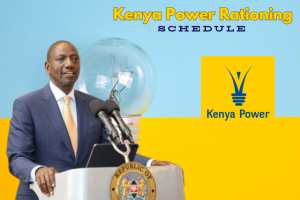
Bodies Swell
Swelling, also known as edema, occurs when excess fluid builds up in the body’s tissues, leading to puffiness or enlargement of the affected areas. While swelling can happen anywhere in the body, it is most common in the hands, feet, legs, and ankles.
Swelling can be a temporary reaction to an injury or an ongoing problem related to an underlying health issue. This article will explore why our bodies swell, the common causes of swelling and symptoms, and how to manage or prevent it.
What is Swelling?
Swelling occurs when fluid accumulates in the body’s tissues, often due to inflammation or the body’s response to an injury. This can happen as a natural part of the healing process, but it can also be a sign of something more serious. In some cases, swelling may be a result of water retention, an allergic reaction, or poor circulation.
Swelling can range from mild puffiness to severe enlargement of the limbs or other parts of the body. Depending on the cause, it can be accompanied by other symptoms such as pain, redness, or warmth in the affected area.
Common Causes of Swelling
Injury
Injury-related swelling is the most common type of swelling and occurs as a result of the body’s natural healing process. When an injury occurs, the body sends more blood and fluid to the area to deliver oxygen and nutrients, leading to swelling.
- Examples: Sprains, strains, fractures, or muscle injuries.
- How to Manage: Applying ice to the injured area, keeping the limb elevated, and taking anti-inflammatory medication can help reduce injury-related swelling.
Infections
Infections cause swelling due to inflammation as the body’s immune system responds to the invading bacteria, virus, or other pathogens. The infected area may become swollen, red, and painful.
- Examples: Skin infections like cellulitis, abscesses, or systemic infections that cause general swelling.
- How to Manage: Antibiotics, antiviral medication, or proper wound care may be necessary to treat infection-related swelling.
Allergic Reactions
When the body encounters an allergen, such as pollen, insect stings, or certain foods, it releases histamines, which can cause swelling in the affected areas. Allergic reactions may cause localized swelling, such as swollen lips, eyes, or throat, or more widespread edema.
- Examples: Swollen eyes or lips from a food allergy, or an anaphylactic reaction that causes swelling of the throat.
- How to Manage: Antihistamines can help relieve minor allergic swelling, but severe reactions may require emergency medical intervention.
Fluid Retention
Also known as edema, fluid retention occurs when the body holds onto excess water, often due to imbalances in salt, hormones, or kidney function. This leads to swelling, particularly in the lower extremities such as the feet and ankles.
- Examples: Swelling in the legs due to standing for long periods, or swelling during pregnancy due to hormonal changes.
- How to Manage: Reducing salt intake, elevating the legs, and staying active can help reduce fluid retention.
Heart, Kidney, or Liver Disease
Certain medical conditions, including heart failure, kidney disease, and liver disease, can cause the body to swell. These conditions interfere with normal fluid balance, causing it to accumulate in the tissues. People with heart disease may experience swelling in the legs and ankles, while those with kidney or liver disease may notice swelling in the abdomen or face.
- How to Manage: These conditions require medical attention. Diuretics and lifestyle changes may be recommended, but it is essential to work with a healthcare provider to manage the underlying condition.
Venous Insufficiency
Venous insufficiency occurs when the veins in the legs do not properly return blood to the heart, causing fluid to pool in the legs, leading to chronic swelling. This condition is often accompanied by varicose veins and can worsen over time if left untreated.
- How to Manage: Wearing compression stockings, exercising, and elevating the legs can help improve circulation and reduce swelling.
Pregnancy
During pregnancy, hormonal changes, increased blood volume, and pressure on the veins can cause swelling, particularly in the feet, ankles, and legs. Swelling is common in the later stages of pregnancy but should be monitored, especially if it is sudden or severe, as it can be a sign of preeclampsia.
- How to Manage: Staying hydrated, elevating the legs, and avoiding standing for long periods can help manage pregnancy-related swelling.
Symptoms of Swelling
Swelling may present with the following symptoms, depending on the cause:
- Puffiness or enlargement of the affected area.
- Stretched or shiny skin.
- Skin that retains an indentation (pitting edema) when pressed.
- Redness or warmth, particularly if the swelling is due to an infection or injury.
- Pain or discomfort in the swollen area.
In some cases, swelling may be accompanied by shortness of breath or difficulty breathing, which requires immediate medical attention, as it can indicate a more serious condition like heart failure or an allergic reaction.
Prevention and Management of Swelling
While some causes of swelling are unavoidable, there are steps you can take to minimize and manage it:
- Stay Active: Regular physical activity improves circulation and prevents fluid from pooling in the extremities.
- Reduce Salt Intake: High sodium levels can lead to fluid retention. A low-sodium diet can help prevent swelling.
- Stay Hydrated: Drinking plenty of water can help maintain the body’s fluid balance and prevent water retention.
- Elevate Affected Limbs: Elevating swollen areas can help reduce fluid buildup and encourage blood flow.
- Wear Compression Stockings: If you experience swelling in your legs, compression stockings can help improve circulation and reduce discomfort.
- Monitor Health Conditions: If you have an underlying condition like heart, kidney, or liver disease, work with your healthcare provider to manage it effectively to prevent swelling.
In Conclusion
Swelling can be a minor inconvenience or a sign of a more serious health issue. By understanding the common causes and symptoms, you can take proactive steps to manage and prevent swelling.
If you experience persistent or unexplained swelling, it’s important to consult a healthcare provider to rule out underlying medical conditions and ensure proper treatment.







